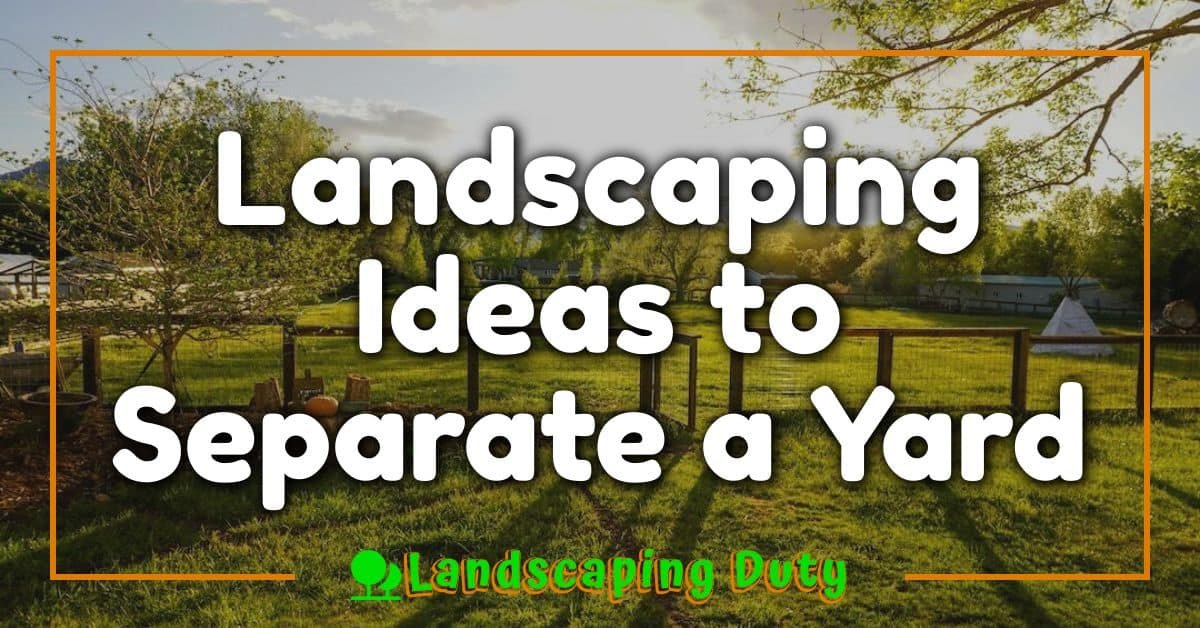Transforming urban rooftops into lush, green spaces is more than just a trend—it’s a creative solution to the challenges of city living. With limited ground space and growing concerns about sustainability, rooftop landscapes offer a breath of fresh air in the concrete jungle. They’re not just visually stunning but also help improve air quality, reduce heat, and create a peaceful escape from the urban hustle.

I’ve always found rooftop gardens fascinating because they blend functionality with beauty. Whether it’s a cozy retreat or a vibrant community space, the possibilities are endless. Designing these spaces requires a balance between aesthetics, structural considerations, and the unique needs of an elevated environment. It’s all about making the most of what’s above us while bringing nature closer to our everyday lives.
Benefits Of Landscape Design For Urban Rooftops
Enhanced environmental health drives interest in rooftop landscaping. Vegetation absorbs pollutants, improves air quality, and helps lower urban heat by reducing rooftop temperatures. For example, sedum green roofs can decrease surface temperatures by up to 40°F compared to conventional materials.
Increased energy efficiency results from well-designed green rooftops. Plants provide natural insulation, reducing heating and cooling costs. Studies show that green roofs can lower energy use by 6-15%, depending on building size and design.
Maximized use of underutilized spaces provides functional and aesthetic value. Rooftops transform into gardens, outdoor lounges, or urban farms. For instance, commercial buildings have turned rooftops into venues for events, combining productivity with greenery.
Improved mental health and well-being stem from green spaces offering relaxation. Rooftop gardens create an urban oasis, reducing stress and providing space for meditation or small gatherings.
Boosted biodiversity emerges when plants attract pollinators like bees and butterflies. Native plants on rooftops support local ecosystems and enhance green corridors across cityscapes.
Overall property value improves with rooftop landscaping. Research indicates that green roofs can raise property values by as much as 10-15%, making them an attractive feature for urban buildings.
Key Considerations For Rooftop Landscape Design
Designing a rooftop landscape requires attention to structural, environmental, and water-related factors. Each consideration ensures the space is functional, safe, and sustainable.
Structural Integrity And Load Capacity
Understanding load limits is essential before implementing any rooftop landscape. Complex rooftop gardens, for example, may require structural reinforcements to handle the weight of soil, plants, and hardscapes. I recommend consulting structural engineers to evaluate live (people, plants) and dead loads (planters, furniture). Lightweight materials like modular planter systems can reduce strain while maintaining aesthetic appeal.
Climate And Weather Conditions
Urban rooftops often face extreme wind, sunlight, and temperature variations. High-rise gardens benefit from windbreakers, like trellises or taller plants, to protect delicate species. When selecting vegetation, I choose drought-tolerant types or native varieties that thrive in the local microclimate, ensuring resilience in heat waves or abrupt weather changes. Reflective heat from building surfaces may influence plant health, so shade structures or pergolas could prevent excess heat stress.
Water Management And Drainage
Effective drainage systems are critical to avoid water pooling, which could lead to roof damage. I use drainage layers, such as geotextiles or gravel, beneath planting zones to facilitate proper flow. Installing water retention mats prevents overwatering and supports sustainable irrigation practices. Rainwater harvesting systems can also store water for rooftop gardens while reducing runoff pressure on urban drainage networks.
Elements Of Effective Rooftop Landscaping
Rooftop landscapes combine greenery, practicality, and design to create spaces that thrive in urban environments. Each element plays a critical role in maximizing both aesthetic and functional benefits.
Plant Selection And Placement
Carefully selecting plants ensures durability and low-maintenance needs. I prioritize native species, like sedum or lavender, for their adaptability to urban climates and minimal water requirements. Arranging plants based on sun exposure and wind patterns helps create microenvironments. For instance, taller shrubs can act as windbreakers, while trailing vines provide shade and visual interest. Grouping plants with similar water and sunlight needs improves health and ease of care.
Sustainable Material Choices
Using eco-friendly materials ensures longevity and reduces environmental impact. I choose lightweight options, such as recycled composites or sustainably sourced wood, to minimize structural strain. Reflective or cool materials, like porcelain pavers, lower heat absorption on rooftops. Durable, permeable paving solutions enhance drainage while maintaining functionality. Reusing materials from deconstructed projects supports sustainable practices and minimizes waste.
Integration Of Functional Spaces
Functional spaces enhance usability and promote urban biodiversity. I incorporate seating areas with built-in planters or modular furniture to maximize space optimization. Creating zones, such as outdoor kitchens, relaxation corners, or container farms, ensures diverse usage. Installing habitats like birdhouses or pollinator-friendly gardens fosters ecosystem support while blending functionality with ecological benefits.
Innovative Design Trends In Urban Rooftop Landscaping
Urban rooftops have become canvases for implementing cutting-edge landscaping concepts. These innovative trends emphasize sustainability, functionality, and aesthetic appeal.
Green Roof Systems
Green roof systems are transforming urban spaces by incorporating vegetation directly into rooftop structures. Extensive systems, using lightweight soil layers and hardy plants like sedum, provide low-maintenance solutions for insulating city structures. Intensive systems offer deeper soil layers for growing shrubs or even trees, ideal for creating rooftop parks. Modular green roof trays, which allow quick installation and rearrangement, appeal to property owners prioritizing flexibility.
Vertical Gardens And Living Walls
Vertical gardens, or living walls, maximize space efficiency by integrating greenery vertically. These systems use mounted panels embedded with plants like ferns, ivy, and moss, adding visual appeal to high-density rooftops. Automated irrigation systems simplify maintenance while preserving water. I often see living walls used to minimize urban heat and improve air quality in compact rooftop areas.
« Landscape Design for Coastal Properties: Tips for Resilient and Stunning Outdoor Spaces Designing a Landscape with Seasonal Color Changes for Year-Round Beauty »
Eco-Friendly Lighting Solutions
Eco-friendly lighting enhances rooftop functionality while reducing energy consumption. LED fixtures with solar-powered systems provide efficient, sustainable lighting options. Motion-sensor lights optimize electricity usage, catering to energy-conscious designs. Using warm-toned fixtures softens rooftop aesthetics, making spaces inviting for evening gatherings.
Challenges And Solutions In Urban Rooftop Landscaping
Structural Limitations
Rooftop gardens face weight constraints. Overloading rooftops without proper assessment risks structural damage. I consult engineers to determine load capacity and recommend lightweight soil, modular planting systems, and structural reinforcements for complex designs. Prefabricated planters and foam-based substrates reduce strain while ensuring plant health.
Climate Extremes
Urban rooftops endure intense sun, high winds, and temperature fluctuations. I incorporate windbreaks like trellises or hedges to protect plants. Heat-tolerant and drought-resistant species, such as succulents or ornamental grasses, thrive in these conditions. Shade structures and reflective surfaces can also guard against excessive heat.
Water Management
Rooftop gardens often struggle with drainage issues and limited water access. Effective irrigation relies on drainage layers, permeable membranes, and rainwater harvesting systems to prevent pooling. Drip irrigation systems distribute water efficiently, conserving resources while supporting plant health.
Limited Space
Space constraints in urban areas pose layout challenges. I recommend vertical gardens, repurposed furniture, and multi-functional elements such as planters doubling as seating. These maximize utility while maintaining aesthetic appeal, ensuring even small areas deliver functionality and beauty.
Accessibility and Maintenance
Maintenance on elevated spaces can be complex. I integrate automated systems like smart irrigation controllers to simplify upkeep. Raised planting beds reduce physical strain during gardening, and clear pathways improve accessibility. Partnering with landscape professionals ensures long-term sustainability.
Conclusion
Urban rooftop landscapes represent a perfect harmony between nature and city living, turning overlooked spaces into vibrant, functional oases. With thoughtful planning and innovative design, these green havens can address environmental challenges, enhance well-being, and add significant value to urban properties.
By embracing sustainable practices and modern trends, rooftop gardens have the potential to reshape urban environments. They’re not just about aesthetics—they’re a step toward a greener, more resilient future. Whether it’s a tranquil retreat, a productive urban farm, or a biodiversity hotspot, every rooftop can tell its own unique story.
















